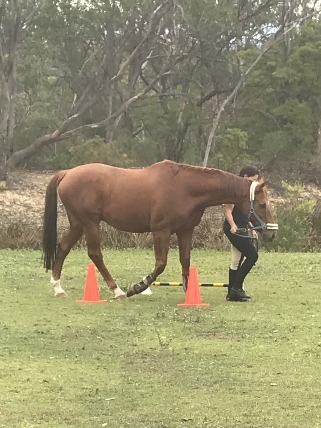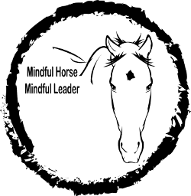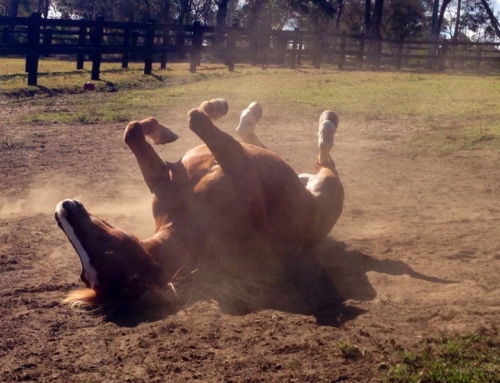Most days I coach individuals in leadership presence and social intelligence in person alongside my four-legged colleagues – horses. Regularly, I join leadership consulting colleagues in co-facilitating experiential sessions for senior and emerging corporate leaders – alongside a herd of horses. Most days, but not in recent days…nor in the days to come. Like so very many around the world, my business is disrupted. Luckily for me though, I still live on the land, with my daily routine bookmarked as ever by feeding the horses and time spent outside in nature. This continuity is helpful in staying grounded, mindful and healthy in challenging times. Creating rituals, such as facing east and welcoming the return of the sun and turning to the western sky, releasing any stress gathered in the day with the setting sun, are known to be important tools in self-care. A movement practice and mindful meditation work helps set you up for the day – and transition to, or unwind in, the evening. These practices become even more beneficial in these uncertain, challenging times.
Connected, intentional leadership is also even more essential now for so many leading remote teams, but also for each person leading their families, themselves, perhaps now, like me, with work much changed, reduced or entirely removed from their lives.
What do I mean by connected, intentional leadership? Being connected to self, to one’s own felt sensations, emotions and, crucially, to one’s breath, allows one to intentionally connect with others and with the environment. Having this level of mindful, self-awareness facilitates better self-regulation, which enables more considered, intentional action and response, rather than unconscious reaction to events or people. When a leader has this, they can consciously influence the nervous systems of those they interact with, taking into account what is happening in the environment or system around them.
Some years ago I was told that CEO stands for Chief Emotional Officer, as the CEO is responsible for setting the emotional tone of the leadership team and thus the broader business. We are all CEOs, if not of teams, then of families, and certainly ourselves. Leadership is a function of all levels of organisations not the sole responsibility of those designated with the title and this is why the embodied, practical tools I teach with the horses are useful to anyone and everyone. Natural horse herds have fluid leadership dynamics according to the situation and who is best skilled and resourced to lead at the time. Maybe a wise mare leads to the best grazing or water, while a curious youngster leads to inspect a novel object and a mature stallion gives the signal to flee from danger, driving the herd from behind. Horses are socially intelligent animals with heightened awareness of their environment, because, like us in our hunter gatherer days, there are potential dangers and predators in the wild. Biologically, we have not much evolved, and our mammalian nervous systems have much similarity. Our disconnection from our felt sensations, given we spend so much time in our heads, means we often overlook the information we are transmitting, unintentionally, through our non-verbal communication, just as we often are unaware of the information transmitted from the environment and others. Experiential learning sessions with the horses help people remember this, experience the effect and learn how to consciously influence through the awareness and use of mindful, grounded, nuanced body language, posture, breathing and aligned intention. Horses respond in the now, without judgment or words; a large, sentient biofeedback provider enabling people to experience often profound insight – and then to embody it. Practices and tools can then be applied back in the office, at home, everywhere, every day.
So I really miss not being able to provide these rich though simple experiences for people, however there are tools I demonstrate human to human before we explore and experiment with leadership with the horses – and these can be employed now, even while you are working in isolation.
For example, conscious use of the breath to engage the parasympathetic nervous system, thus becoming more grounded and accessing more of your cognitive function, before any virtual meeting is a powerful pause. Check in with a quick, mindful body scan and notice any tension, your breath quality and pattern before joining the online meeting, be it Zoom, Skype, Teams…and set your posture. Ground yourself with both feet on the floor, inhale and allow your spine to lengthen, then soften your core and think of something you enjoy , something that makes you smile – and notice the shift in your body. Bring this new, more grounded and receptive presence to your meeting.
Be fully present in your virtual meeting – make eye contact – deeply listen. Don’t be distracted by an alert on your phone (and turn the sound off as you would if you were in a face to face meeting), don’t read emails while others are talking – be fully present – and use your breath and posture to consciously influence the tone, not just your words.
Check in with people, note any tension or tightness, shifts in their body language or tone – and make sure everyone gets a chance to voice their opinion if a group meeting. If things are getting heated, or frustration creeps in, conscious use of the breath, a few deep in-breaths with longer exhales with an audible soft sigh, will release tension and reset the nervous system enabling clearer thinking and hearing. Using coherent breathing (breaths engaging the diaphragm, not just shallow chest breaths with equal inhales and exhales, e.g. in for 6 out for 6) will establish calm purpose, contagious to the others, even though not in the room. Anxiety is one of the most contagious emotions, but calm is contagious too. As a leader, this is what you need to consciously influence.
Making meetings shorter – thirty minutes or less – will help optimise meaningful discussions and retention. Make sure you – and your teams, are taking regular breaks from focused time at the computer; get up stretch, move the spine in all directions to open up energy blocks, engage “soft eyes” i.e. change from narrow focus to wider, peripheral vision regularly – this resets the nervous system. Create time to be in a flow state at least part of the day – we can all achieve this peak performance state – some, like me , find it comes most easily in nature, (hence the horses, the sunsets) or in physical movement (my QiGong practice, 5Rhythms dance, walking) – others find it jogging, or more intense exercise, or through alignment and focus on a goal. Achieving this state regularly in small chunks enables you to achieve it more easily – and it enables clearer thinking and optimum performance. Interestingly, having a regular gratitude practice can also aid shifts into flow states.
Horses teach great boundary awareness too – and these are so critical with many people having to now share work space at home with their partner and children at home needing attention with their schooling. Conversations to establish boundaries between work space and personal space, work time and personal time along with compromise to accommodate everyone’s needs requires commitment and full presence. Using conscious breath to calm, to centre, to pause – and then consciously choose a response, rather than unconsciously reacting. Gifting your full presence to a child, a partner, a colleague ultimately proves more effective not just in productive time, but most importantly, in the quality of relationship. Being fully present means people feel they can count on you and that you genuinely care.
We all need to be more genuinely caring of ourselves, each other, our communities, especially the most vulnerable, as well as our planet in these times. While the horses remain here as such powerful teachers, for now, I am offering heavily discounted zoom or skype sessions to people who would like to learn and practice some of these simple techniques. Occasionally we might even ask a horse to give their input!
As a coach who has helped hundreds of people through life disruptions, career change and transitions, there are tools I can bring to aid self-assessment and growth alongside the leadership tools. Please get in touch via linked in, my website or email me to discuss what may help thrive in these times. judy @mindfulhorsemindfulleader.com

Calmness, Connection, Compassion….one breath at a time……


Beautiful Judy – thank you for sharing.